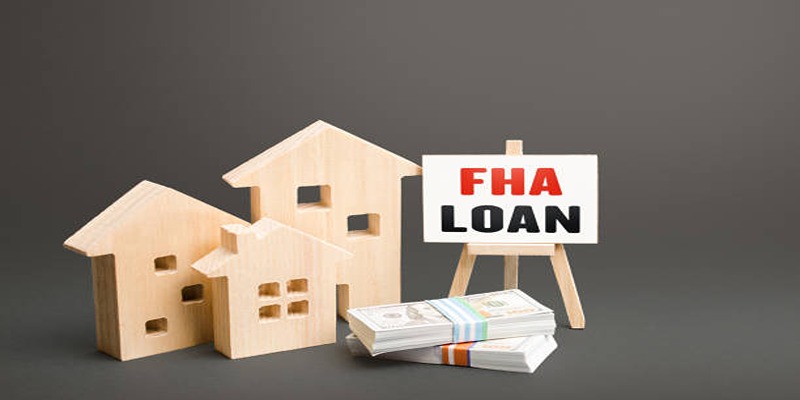FHA Mortgage Insurance Premium: What Homebuyers Need to Know
Sep 27, 2024 By Georgia Vincent
When considering the purchase of a home, understanding the financial implications is crucial, particularly regarding mortgage insurance premiums. For many homebuyers, especially those opting for an FHA (Federal Housing Administration) loan, this aspect can significantly influence the overall cost of homeownership. FHA mortgage insurance is typically mandated for borrowers with lower down payments, providing insurance to lenders against potential defaults. While it enables access to financing with a smaller initial investment, it also results in additional monthly expenses. Therefore, it's essential for prospective homeowners to grasp the intricacies of FHA mortgage insurance premium rates, the duration for which they are paid, and how they impact long-term financial commitments. This knowledge not only aids in budgeting but also ensures that buyers make informed decisions throughout the homebuying process.
Understanding FHA Loans

The Federal Housing Administration, a branch of the U.S. Department of Housing and Urban Development (HUD), was established in 1934 to facilitate homeownership for low-to-moderate income families and individuals. This government agency does not directly lend money but insures loans provided by approved lenders, reducing the risk associated with lending to borrowers with lower credit scores or smaller down payment amounts.
The primary objective of FHA loans is to make homeownership attainable for underserved communities, including first-time homebuyers, individuals with limited credit history, and those with lower incomes. To achieve this goal, the FHA offers more lenient eligibility requirements and financial terms, providing access to loans with smaller down payments than traditional mortgages. However, as a trade-off, borrowers are required to pay mortgage insurance premiums.
What is Mortgage Insurance Premium?
Mortgage insurance premium (MIP) is a fee paid by borrowers to insure their FHA loans. It protects lenders in the event of default and covers potential losses associated with foreclosure proceedings. MIP also plays a crucial role in facilitating lower down payments, as it mitigates the risk for lenders. This type of insurance allows individuals who may not have been able to afford a home otherwise to become homeowners.
Cost of FHA Mortgage Insurance Premium
The cost of FHA mortgage insurance premiums can affect the total expense of homeownership significantly. The upfront mortgage insurance premium (UFMIP) and the annual mortgage insurance premium (AMIP) add to the financial burden for homebuyers. Understanding the costs associated with both types of premiums is essential for effective financial planning.
Upfront Mortgage Insurance Premium (UFMIP) Costs
The UFMIP is typically 1.75% of the base loan amount. For instance, if a borrower secures an FHA loan for $250,000, the UFMIP would amount to $4,375. Borrowers have the flexibility to pay this fee at closing or finance it into the loan. Rolling the UFMIP into the loan increases the loan amount and, consequently, the monthly payments. While spreading out the cost may ease immediate financial strain, it is crucial to be aware of the impact on long-term expenses.
Annual Mortgage Insurance Premium (AMIP) Costs
The AMIP varies based on several factors such as the loan-to-value (LTV) ratio, loan term, and down payment amount. The AMIP typically ranges between 0.45% to 1.05% of the loan amount, recalculated annually. For example, a borrower with a $200,000 loan and an AMIP rate of 0.85% would pay approximately $1,700 annually or around $142 monthly. The AMIP is added to the borrowers regular mortgage payments, increasing their monthly financial obligations.
How Long Do Borrowers Pay for FHA Mortgage Insurance Premiums?
The duration for which borrowers pay for mortgage insurance premiums depends on several factors, including:
- Loan-to-value ratio (LTV): The LTV ratio is a comparison between the loan amount and the home's appraised value. For example, if a borrower takes out an FHA loan for $200,000 on a property valued at $250,000, the LTV would be 80%. A lower LTV indicates that there is more equity in the home, reducing the risk for lenders. Borrowers with an LTV of 90% or higher must pay MIP throughout the entire mortgage term.
- Term length: The length of an FHA loan also plays a role in determining how long borrowers will pay for MIP. Loans with terms longer than 15 years require AMIP to be paid every year until the remaining principal balance reaches 78% of the initial home value or for a minimum of 11 years, whichever occurs first. For loans with terms of 15 years or less and an LTV ratio below 90%, no MIP is required after reaching that threshold.
- Down payment amount: A higher down payment can result in lower MIP rates and reduce the overall duration for which it needs to be paid. Borrowers who put down at least 10% are eligible for a reduced AMIP rate and only need to pay it for 11 years or until their LTV reaches 78%.
Understanding these factors can help borrowers plan and budget accordingly, as well as determine when they may be able to request the removal of MIP from their FHA loan.
How to Calculate MIP?
To calculate the MIP for an FHA loan, borrowers can use the following formula:
Loan Amount x MIP rate = Annual MIP
Annual MIP / 12 = Monthly MIP
For example, if a borrower has a $200,000 loan with a 0.85% AMIP rate, their annual MIP would be $1,700 ($200,000 x 0.85%). This would equate to a monthly MIP of approximately $142 ($1,700 / 12).
Benefits of FHA Mortgage Insurance

- Accessibility: FHA mortgage insurance enables individuals with lower credit scores or limited credit history to qualify for home loans, making homeownership feasible for many who would otherwise be ineligible.
- Low Down Payment Requirements: With FHA mortgage insurance, borrowers can secure a home loan with a down payment as low as 3.5% of the purchase price, reducing the upfront financial burden.
- Flexible Qualification Criteria: FHA loans have more lenient qualification requirements compared to conventional loans, which can benefit first-time homebuyers and those with past financial challenges.
- Support During Financial Hardships: FHA loans can offer various options for borrowers facing financial difficulties, such as loan modifications and forbearance, providing a safety net and reducing the risk of foreclosure.
- Competitive Interest Rates: FHA mortgage insurance can help borrowers access competitive interest rates, which can result in lower monthly mortgage payments and cost savings over the life of the loan.
- Equity Building: The reduced financial barriers allow more individuals to enter the housing market, thereby enabling them to build equity in their homes and benefit from home appreciation over time.
Conclusion
FHA mortgage insurance plays a pivotal role in broadening access to homeownership, particularly for individuals who may struggle to meet the stricter criteria of conventional loans. By offering features such as low down payment requirements, flexible qualification criteria, and support during financial hardships, FHA loans provide a viable path to purchasing a home. However, it is crucial for borrowers to fully understand the costs and duration of mortgage insurance premiums, as these can significantly impact overall homeownership expenses. Proper planning and awareness of the factors affecting MIP can help borrowers make informed decisions and potentially reduce the long-term financial burden.

Georgia Vincent Sep 27, 2024
FHA Mortgage Insurance Premium: What Homebuyers Need to Know

Pamela Andrew Dec 04, 2024
U.S. Bank tech spend up 12% to $513M

Susan Kelly Sep 27, 2024
Broker Price Opinions Explained: What You Need to Know

Verna Wesley Dec 04, 2024
Klarna CEO indicates US initial public offering

Triston Martin Nov 21, 2023
What Does Annual Income Mean for Credit Cards?

Triston Martin Dec 09, 2024